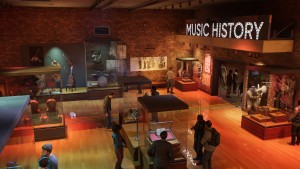Star Trek Bridge Crew Review

A hail of torpedoes rockets in from multiple vectors. After my tactical officer disables the Klingon shields, I disregard our own safety and give the order to drop our shields and initiate transport. Desperate seconds pass as we lock on and beam the prisoners aboard, even as my helmsman evades the circling Birds of Prey. With the civilians aboard, we jump to warp just in time to save the day.
In its finest moments, Star Trek: Bridge Crew captures a crucial part of the tension and cooperation of the Star Trek fantasy. Up to four players don VR headsets to sit in one of the priority spots on the bridge, manipulating controls to power up systems, set red alerts, fire phasers, and many more familiar callouts to the shows and movies. Each position has its own responsibilities, and every station has smartly mapped controls that help you feel active and engaged, tapping buttons, pulling up maps, and throttling up to warp speed. While workable with a traditional controller, the interaction model is significantly more immersive with motion-tracking controllers in hand, allowing for manual manipulations and goofy hand gestures to your teammates.
A brief campaign is followed by endless procedurally generated levels in one of a few variant styles, like rescue or defend missions. The available scenes are fun in the beginning, but the depth isn’t there for long-term play. Actions become rote, and the illusion of variety is ruined because it all comes back to a few basic controls, such as the constant repetition of selecting a target, approaching, and scanning them. Without a deeper story and characters, or more crafted missions, the thrill rapidly transforms to tedium.
Red Storm has done an admirable job making Bridge Crew playable solo. From the captain’s chair, you can command almost everything through orders to A.I. crew, except for some unwise weapon fire timing, and annoyingly bad pathing from the helmsman. In those instances, you can rapidly switch to other stations and take control. The whole experience is far more compelling in multiplayer, where everyone is chatting and taking partial responsibility for the ship’s smooth operation. Given the splintered market of VR headsets, I was glad to see that cross-platform play makes multiplayer with friends more likely. Voice chat, head-tracking, and hand-tracking combine to allow for emoting and expression, even if the character models themselves are nothing to write home about, and the avatar customization is lackluster.
Excepting characters, the outer space and ship visuals are a highlight. Multi-colored spatial anomalies and debris-filled asteroid fields help to enliven the void. I was delighted to admire the familiar Star Trek ships in a virtual space – the closest most of us will ever come to being on-set. The central controllable ship, the U.S.S. Aegis, uses the recent movies as visual inspiration. If that rubs you the wrong way, you’ll be happy to see that the post-campaign missions allow you to inhabit the original ‘60s-era Enterprise, complete with flashing colored buttons, captain’s clipboard, and iconic sound effects. The nostalgia level is high, but the analog control systems are twice as hard to use with success.
Star Trek: Bridge Crew nails something that franchise fans have long desired: a chance to control a starship, tap out commands on a console, and work together as a team. But Star Trek is also about character interactions, moments of discovery, and stories that address the human condition. Without any of that flavor, something feels off in the endless torpedo launches and ship scans. As a VR experience, Star Trek: Bridge Crew is another step forward for the medium, offering some of the most compelling interpersonal communications, cooperation, and deep presence in a shared space that I’ve yet seen. I’d love to see Ubisoft continue to iterate on this franchise; the core mechanical systems here are solid, and the rest of the Star Trek fantasy would fill in some notable gaps.















